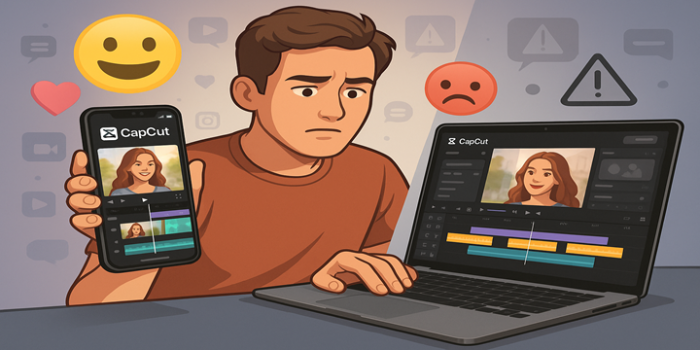Table of Content
I’ve used quite a few video editors over the years — some desktop-based, some mobile, and many that promised more than they delivered. A few months ago, I came across CapCut, and after spending time with it on both my phone and desktop, I thought it was worth documenting exactly how it works — what it’s good at, where it needs improvement, and who it’s really meant for.
Why I Tried CapCut in the First Place?
I wasn’t actively searching for a new editing tool. I mostly needed something fast, free, and flexible enough to handle TikTok and Instagram Reels without spending hours trimming and layering.
CapCut popped up in app store suggestions — and I recognized the name from ByteDance (the same company behind TikTok). That gave me enough reason to test it out.
First Impressions: Clean UI and Fast Setup
The mobile interface is clean, and I didn’t need a tutorial to get started. I opened a new project, imported a few clips, and was already trimming within seconds.
Some things I noticed right away:
- The timeline felt responsive, even with longer videos.
- Text overlays and stickers were simple to apply.
- Exporting was fast, and I didn’t see a watermark on my test video (though that can change based on region or settings).
I appreciated how little friction there was. No sign-ups required to start, and no ads interrupted the editing process.
The Tools I Used Most — And What They Actually Did
Here’s what I personally found useful during real-world use:
- Auto-captions: I used this for voice-based clips, and the accuracy was surprisingly decent. I still had to edit a few words, but it saved time.
- Speed controls: I adjusted parts of a vlog with slow motion and found the curve editor intuitive enough for casual edits.
- Filters and LUTs: The presets were decent for social-ready content. If you need cinematic grading, though, you’ll feel limited.
- Green screen (Chroma key): It worked okay for basic tests, but I had to adjust thresholds manually. Definitely not perfect.
- Split and Trim: These basic tools were smooth. No crashes, no lag, even on older phones.
It’s not packed with advanced animation or motion tracking, but for short-form content, it covers 80% of what most people need.
Testing the Desktop Version: Not Just a Mobile App
I also tested the web/desktop version of CapCut. It mirrored much of the mobile app but added a few perks:
- More layout space to work with multiple layers
- Easier to drag and arrange visual assets
- Some AI features, like background removal, worked better on desktop
Still, it’s not as deep as Premiere Pro or DaVinci Resolve — and it’s not trying to be.
What CapCut Does Well (From My Experience)
- Beginner-friendly: No steep learning curve; I didn’t need any training to get decent results.
- Mobile editing is smooth: You can edit and post while on the go.
- Good for social content: Everything is formatted with vertical-first creators in mind.
- Free to start: I didn’t run into paywalls while testing basic features.
What Didn’t Work for Me
- Limited control for pro editing: No support for things like nested sequences or precise keyframe management.
- Some transitions feel gimmicky: Great for viral clips, but not so much for polished, long-form videos.
- Cloud syncing feels inconsistent: Moving between mobile and desktop isn’t always seamless unless I export manually.
Final Thoughts: Is CapCut Worth Using?
If you're a creator making short videos for TikTok, YouTube Shorts, or Instagram, CapCut is more than enough. It’s easy, fast, and doesn’t require a high-end machine to run. But if you’re building documentaries, multi-layered edits, or cinematic content, it probably won’t meet all your needs.
I still keep CapCut installed for quick edits and captions — and sometimes that’s exactly what I need.


